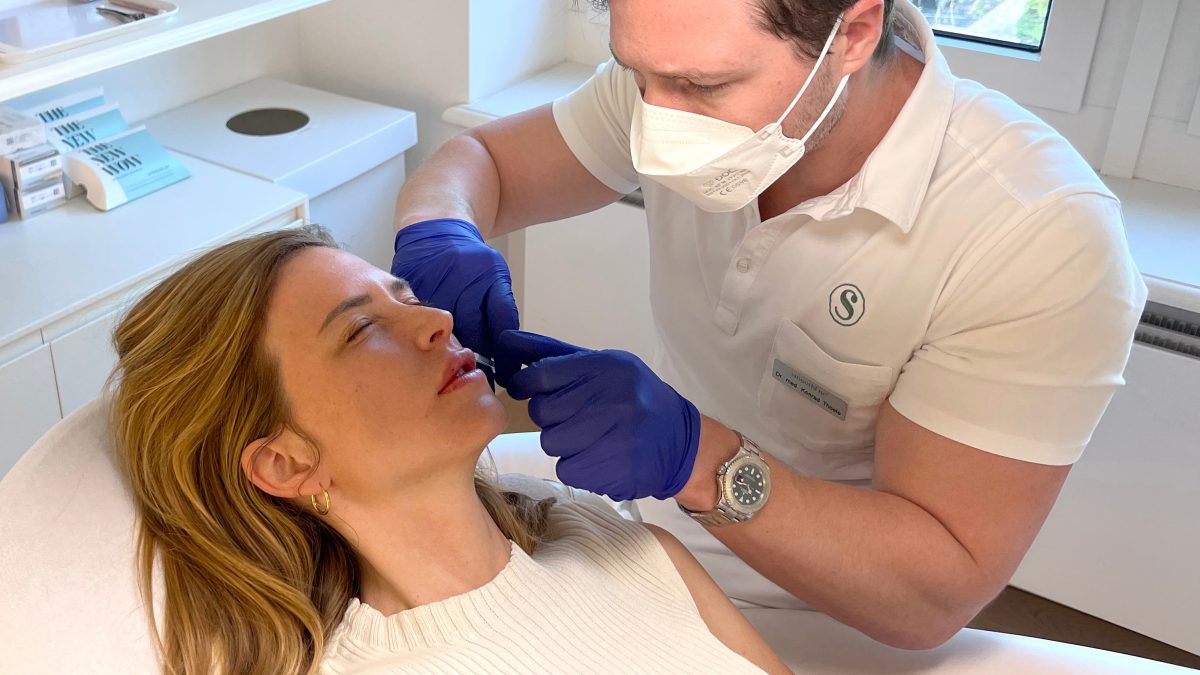What is hyaluronidase?
Put simply, hyaluronidase is the "opponent" of hyaluronic acid: it is an enzyme produced by the body that can break down and degrade hyaluronic acid. Specialists often refer to hyaluronidase as hylase.
When is hyaluronidase used?
Hyaluronidase is primarily used to dissolve excess quantities of injected hyaluronic acid filler. It can also be used in the event of complications during hyaluronic acid treatment, such as an intolerance or the formation of nodules. Any undesired results can be corrected completely.
How quickly does hyaluronidase work?
Hyaluronidase takes effect very quickly, breaking down the hyaluronic acid within a day or two. The final result is generally visible within a few days.
One example: too much lip volume

Stephanie naturally has rather thin lips. She opted for a hyaluronic acid filler treatment to make her lips fuller and to feel more feminine. Unfortunately, the treatment that she received at another clinic was excessive and made her lips so large that she could barely close her mouth.
Stephanie then sought out Smoothline to reverse the unfortunate outcome and remove the excess hyaluronic acid.
Preparation: allergy test
Allergic reactions to the enzyme hyaluronidase are relatively unlikely. But to be on the safe side, each patient is given a prick test following the initial consultation before they receive any treatment. This test involves injecting a tiny amount of the enzyme into the patient's arm to check whether an allergic reaction occurs. Saline solution is injected in a different site as a negative control, and histamine as a positive control.

If no allergic reaction occurs, treatment is carried out in the same way as a filler treatment: first, an anesthetic cream is applied, which takes effect after around 30 minutes. Next, using a very fine needle the hyaluronidase is directly injected into the same area where the hyaluronic acid had previously been injected. Afterwards, the treatment site is cooled, and within a couple of days the hyaluronic acid will have been broken down completely.






